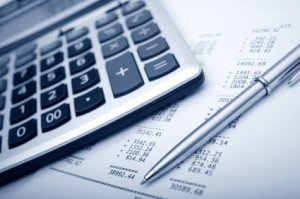Factors in Determining the Level of Future Maintainable Earnings
Valuations are dependent upon a number of subjective assumptions. One of the main assumptions involves the level of expected future profitability.

It is common to see as a basis for future earnings the average of the previous three years. Whilst the average of the previous three years may be appropriate, the reasons for choosing that basis are often not given which reduces the effectiveness of the valuers opinion.
The purpose is to determine the level of profits that are likely to occur into the future. The future maintainable earnings methodology is only appropriate where the level of future profits is expected to be stable. If significant increases in profitability are expected into the future, then the discounted cash flow model should be used.
One of the difficulties in determining the future profitability of privately held companies is that the financial information is often unavailable and unreliable which means that profit forecasts cannot be used with confidence in the valuation process.
We thus have to rely upon past performance of the company as a guide to it's future performance. It is also necessary to analyse the past performance as to its probability that it will continue into the future.
We ask ourselves a number of questions about the company in determining our opinion as to the future profitability of the company. These questions can be split into: Sales, Gross Profits, Expenses and Profits.
Sales:
a) How reliant is the business on a small number of customers?
b) Is the business dependent for its success on the physical location of the business?
c) What is the term of lease and option
d) Have competitors increased or decreased in the last three years?
e) Does the business export any products? If yes, what is the lead time and reliability of demand, impact of exchange rates
f) Dependence on key staff?
g) What are the barriers to entry?
h) Sales- Are they sustainable?
i) Reliance on key contracts?
Gross Margin
a) Does the business import any products? If yes, what is the lead time and reliability of supply, impact of exchange rates
b) Where there are imports, sight copies of leases/licences/contacts
c) Does the business have any particular problems with delivery or quality of products from suppliers?
d) Are they reliant on key contracts?
e) Consistency of margins. Are they improving, stable or deteriorating?
Expenses
a) Consistency of expenses.
b) Relationship between fixed and variable expenses.
Profits
a) How dependent is the business on the shareholders/directors (ie able to be replaced in the market place)?
b) What are the trends of the industry in which they operate?
c) Are the current profits sustainable in the marketplace?
d) Who are the main competitors of the business?
e) What are the limitations of the buyer?
f) Dependence on key staff?
g) Budgets
h) Future Capital requirements
i) Quality of Financial Information
It is only from asking ourselves the above questions (and others that may be appropriate) combined with our professional knowledge of businesses, can we arrive at the basis of future profits.



